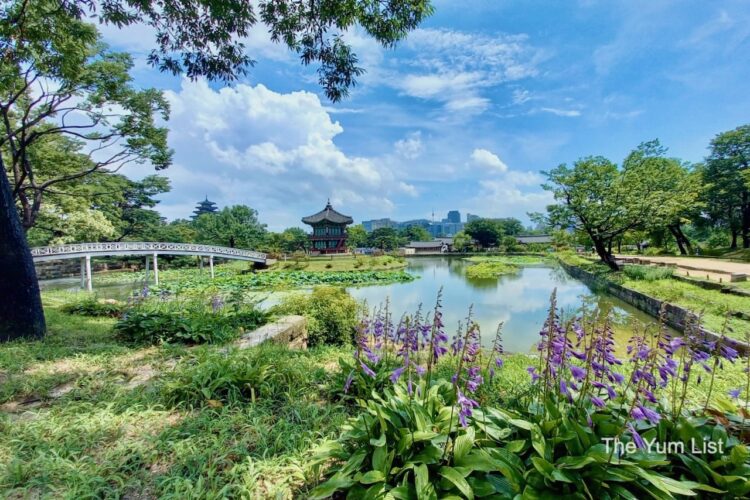Seoul Travel Guide – 4 Day Itinerary, Highlights & Tips
Monica Tindall
We’re fresh back from a spontaneous trip to Seoul! We saw the cheap flights, purchased the tickets and were on the plane less than 24 hours later. I’m usually a planner, so this type of travel is not my preferred style. However, Seoul is easy to navigate, there is so much to see, eat and do, and an abundance of apps make travel easy. We had a no-hassle, exciting and action-packed trip (even without planning).
Seoul, the dynamic capital of South Korea, has it all – ancient palaces, futuristic skyscrapers, incredible natural beauty, shopping, shopping, shopping and a kick-ass gourmet scene – from mouthwatering street food, trendy cafes and hole-in-the-wall joints to fine dining. History enthusiasts, K-pop fans, nature lovers and foodies will feel right at home in Seoul.
Seoul Travel Guide – Highlights & Tips, 4-Day Itinerary
We’d heard rumours that Seoul can be tricky for tourists if you don’t know Korean, as few people speak English. However, with the assistance of technology, we found it a breeze to get around.
Getting There & Airport Arrivals
Several airlines operate direct flights between Kuala Lumpur and Seoul, taking around six and a half hours, depending on weather conditions. We flew Air Asia because of a last-minute deal. It wasn’t the most comfortable flight (tiny squishy seats not made for tall frames), and it is one of the noisiest airlines I’ve ever travelled on (too many unwelcome announcements, people on devices without using headphones). Still, we were willing to put up with a little discomfort for the price.
We were fortunate because South Korea is offering visa-free entry for citizens of 22 countries to promote tourism until the end of this year. There are 110 visa-waiver nations that can apply for the Korean Electronic Travel Authorization (K-ETA), but Australian citizens (US, UK, Canada and Singapore are also on the list) can arrive without preapproval until December 2024. That made purchasing a last-minute flight doable. Malaysians still need to apply for the K-ETA, which usually takes three to four days to process.
On the plane, we received a customs form and arrival card to fill out before landing. Additionally, South Korea requires a quarantine declaration, which we did online before travel, or you can scan the QR code and complete it upon arrival before immigration.
Immigration to South Korea was done manually but was relatively fast and efficient. On departure, all adults were able to use the electronic gates. Families with children under 17 had to go in person to a counter. We spent less than 25 minutes in immigration to arrive and less than 15 minutes to depart.
Incheon International Airport is enormous, clean, and well-signed, and you can refill your water bottle at several drinking stations. Once you’ve collected your luggage (or travel light like us and only take carry-on) and cleared customs, there are many signs to direct you to the transport of your choice.
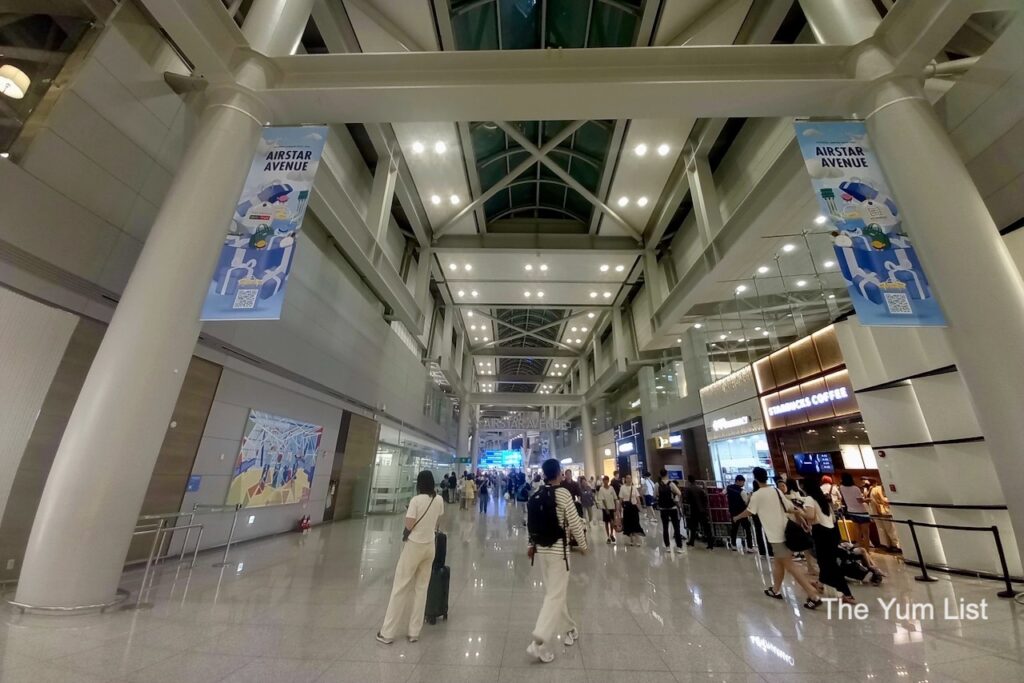
Getting From Incheon Airport To Seoul
Incheon Airport, where most international flights arrive, is quite far from the city centre. Consider these transport options:
Airport Railroad Express (AREX KRW 4 750 – 9 500): Both the express (KRW 9 500) and all-stops trains (KRW 4 750) are convenient if you have minimal luggage and your final destination is Seoul Station. This is the cheapest way to reach Seoul’s city centre. However, transfers (most hotels would require a change to an MRT line) can be challenging for first-time visitors or with luggage. Purchase a T-money card at a convenience store at the airport for travel.
Airport Limousine Bus (KRW 17,000): We recommend this option. It’s more comfortable and convenient, with routes that drop off near major hotels. For instance, we took one directly to Myeondong upon arrival. Our hotel was less than a five-minute walk away, with no metro stairs or exits to navigate. Likewise, the return bus stopped right in front of our departure hotel, Four Seasons Hotel Seoul. The flow was smooth, even during peak hours, because of dedicated bus lanes. The journey takes about 90 minutes and is extremely comfortable and clean. If we had taken the train, the travel time would have been roughly the same.
At the airport, we purchased the tickets via a vending machine (choose your language) and were able to use cash or credit card. On the return, we used our T-money card, which we topped up at convenience stores or on the subway. We used our Maybank Visa without drama.
Taxi: Generally, very expensive. We didn’t even consider it.
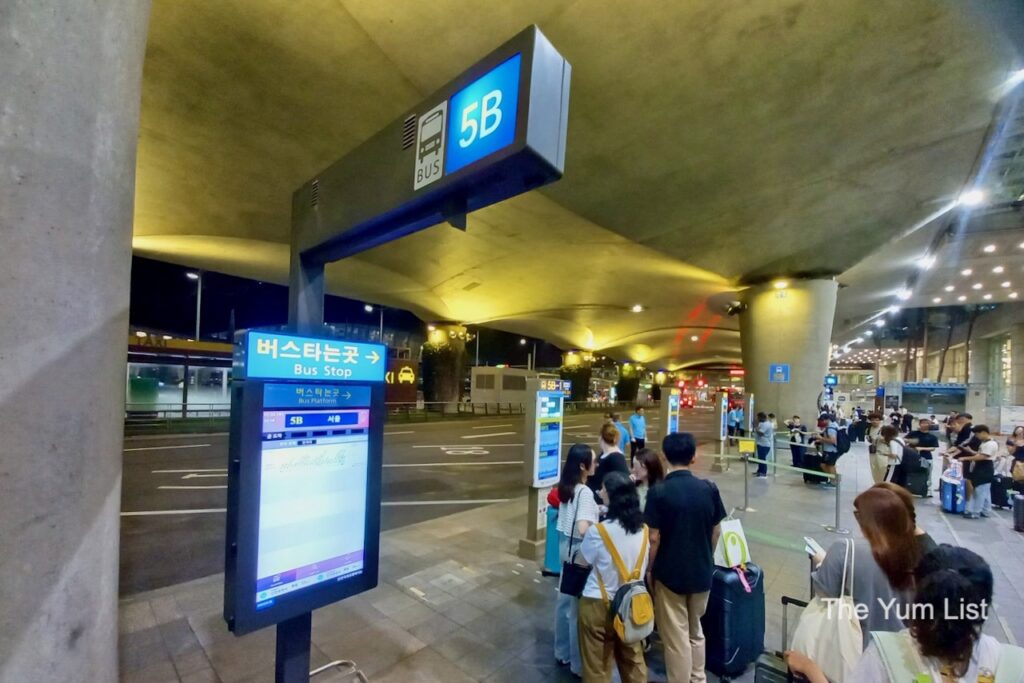
Getting Around Seoul
To get around Seoul, we walked a lot (even at night, it’s super safe and very well lit), and used the excellent public transport – bus and subway. We highly recommend purchasing a T-money card (reloadable at convenience stores and subway stations) for ease of jumping on and off public transport (it can also be used in taxis). Just remember to swipe when you get on AND when you get off. The remaining credit can be refunded at convenience stores upon departure (for amounts less than KRW 20,000 – so don’t go crazy with your top-ups). You can also use this card to get discounts at various attractions, including 10% off the Airport Limousine Bus.
Google Maps, Uber & Grab are not used in Seoul. Instead, download the Naver or Kakao app for navigation (wonderfully accurate and even gives to-the-second-updates on bus/train arrivals/departures).
Get Papago for translation – it is super convenient and works with voice, images and text!
Kakao T was recommended for taxis, which transfers to K.ride in English for international visitors. Most Koreans have the Subway app, which shows all routes and stations, but we didn’t need that either, as Kakao was so accurate.
Money in Seoul
The currency in South Korea is the Korean Won (KRW). Cash is widely accepted and is king, especially for street food and markets. However, most shops and services take credit cards. Again, we had no trouble using our Visa credit card.

Best Time to Visit Seoul & What to Wear
We were in Seoul at the end of July. It was hot and humid. We caught the tail end of the rainy season and got a slight light drizzle on some days. Still, the rain was refreshing in the heat and never lasted more than a few minutes. The web says Spring (April–June) and autumn (September–November) are ideal due to pleasant temperatures. I have no liking for the cold, so personally, I’d avoid winter when temperatures can reach -10 degrees Celsius!
Of course, you should dress according to the season but be aware that general dress in Seoul is on the conservative side. Even in the heat, we rarely saw anyone with exposed shoulders or chest. Some girls wore short skirts, but mostly no one showed any cleavage or used spaghetti straps. Good walking shoes and comfortable clothing are essential to make the most of the sites.
Seoul Travel Guide – Highlights & Tips, 4-day Itinerary
We spent four days in Seoul and had an action-packed schedule. We mostly got around on foot as there is so much to see in between destinations. We probably could have spent a week wandering around, but here are the highlights and what we most recommend from our trip. I’ve grouped them into general areas you could do at the same time.
Day 1 – Gyeongbokgung Palace, National Folk Museum, MMCA & Bukchon Hanok Village & Insadong
Gyeongbokgung Palace
Gyeongbokgung, also known as Gyeongbok Palace, was the main royal palace during the Joseon dynasty. Constructed in 1395, it is the largest of the Five Grand Palaces in Seoul. The architecture is grand and full of picturesque courtyards, and the changing of the guard ceremony is great for photos (Google for updated times). The Palace Museum houses an impressive collection of over 45,000 artifacts from royal palaces and tombs.
National Folk Museum & MMCA
Adjacent to the palace, the National Folk Museum provides a comprehensive overview of Korean traditional life. It’s extraordinarily well done with interactive and multi-media exhibits. And… it’s free to enter. The Modern Museum of Contemporary Art (MMCA) is just across the road and has a permanent collection alongside temporary exhibitions.
Bukchon Hanok Village
In contrast, the Bukchon Hanok Village showcases preserved traditional Korean houses and a sprinkling of trendy boutiques. You can rent traditional clothing at one of several hanbok stores—a very popular activity! If that’s your thing, come here before you visit the palace, as visitors wearing traditional dress gain free entry!
Cheonggyecheon
Don’t miss a walk along the pretty Cheonggyecheon stream. Originally a natural stream during the Joseon Kingdom, Cheonggyecheon was obscured by an elevated highway built after the Korean War as part of the country’s industrialization drive. The river was later uncovered and restored as part of a city redevelopment project. It’s a popular place to stroll early morning and late afternoon.
Insadong
In the evening, head to Insadong, Seoul’s historic district, merging ancient and modern Korea. Narrow lanes are lined with art galleries, antique shops, teahouses, cafes, bars and restaurants. We loved wandering the streets and food hopping. Look out for Samgye-tang (ginseng chicken soup) and delectable street food pancakes made on the spot with melted cheese in the middle. Plan a visit in time for sunset, and you can head up to the rooftop Barmoxy to catch the views before heading down to explore the streets below.



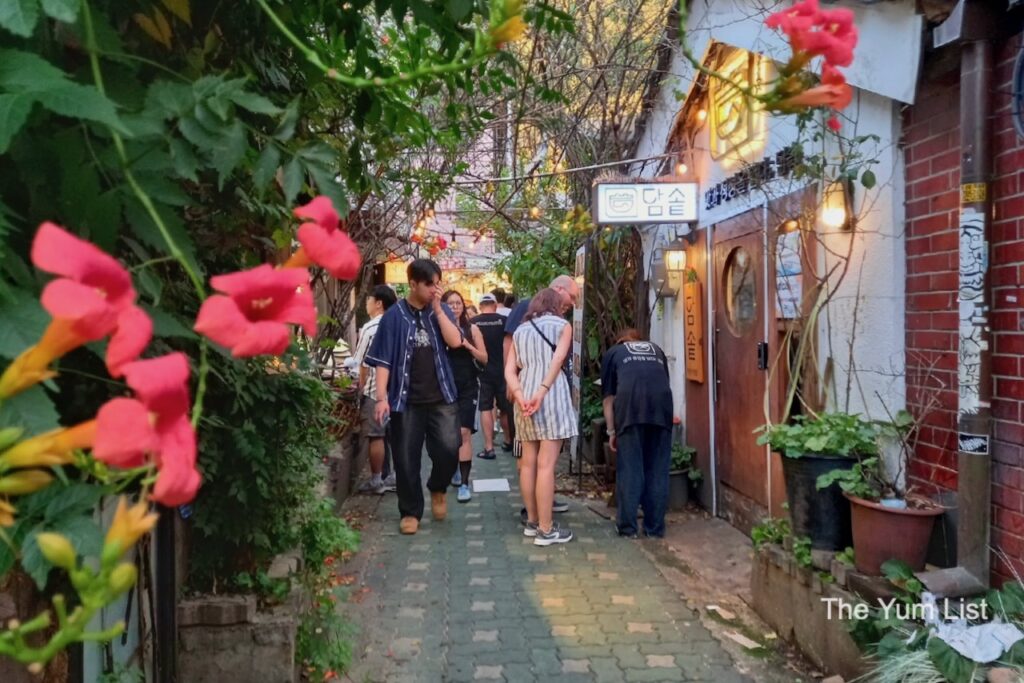
Day 2 – Myeondong – Shopping, Beauty, Food, Views & a Show!
A UNESCO-listed street, Myeongdong Walking Street is the epicentre of Seoul’s retail and fashion world. It boasts hundreds of shops, bars, and restaurants and is bustling both day and night.
Myeongdong is a paradise for Korean skincare and beauty fans. Possibly every second shop is selling Korean-made lines of beauty. Salespeople line the streets, enticing customers in with freebies. You could collect a whole goodie bag without purchasing a thing if you wanted to. You can even customise makeup to match your skin tone.
I’m not a shopper, but I am an eater, so the side streets of Myeongdong, awash with restaurants and street food vendors, were more up my alley. Our favourites were meat skewers with a sweet barbecue sauce, hotteok (sweet, dense bread filled with sugar, cinnamon and peanuts) and green onion pancakes (pajeon). It’s also home to many a Korean barbecue. There’s even a whole street dedicated to fried chicken and beer (a good range of craft beer, too). If you’re a coffee snob like me, you’ll appreciate a darn good brew at #52Lab, where they roast their own beans and are expert baristas.
Take a break from the buzz to visit Myeongdong Cathedral, a historic building and a beautiful example of Gothic architecture.
Across the road from the main walking streets, below State Tower Namsan, there’s an underground mall of shops that have been there for decades (think shoe repair, tailors, used booked shops and vinyl records). It’s great for exploring if you get bad weather, but there’s also a restaurant here serving Korean specialities beyond the common bulgogi, bimibap and barbecue – Hansang.
Two dishes you must try at Hansang (or in South Korea in general) to get more than a surface-level appreciation of Korean cuisine are ganjang gejang and bori gulbi. The first is raw crab marinated in soy sauce. You suck the flesh out of the shell and then use the shell and remaining juices to mix in rice. It’s a delicacy that quickly becomes addictive. Another traditional and lesser-known dish is bori gulbi, barley-aged dried yellow croaker. The fish is typically served with green tea, in which you add some rice and eat it together with the fish. It’s a unique dish.
A few blocks from Myeondong lies Namsan Tower (also known as N Seoul Tower), which has breathtaking panoramic views of Seoul. If you’ve visited Hansang for lunch, you’re already halfway there. K-drama fans will recognise this iconic tower from various romantic scenes. It’s a popular spot for couples who seal their love by attaching locks to the fences. You can reach the top via a cable car or by ascending the tree-lined steps, and the view, especially at sunset, is truly spectacular.
Finally, but unmissable in my opinion, you can laugh your heart out at the NANTA show in Myeondong. This non-verbal comedy performance combines percussion, cooking, and acrobatics. It’s a unique cultural experience you won’t forget. Buy your tickets online and collect them at the door up to an hour before the show.
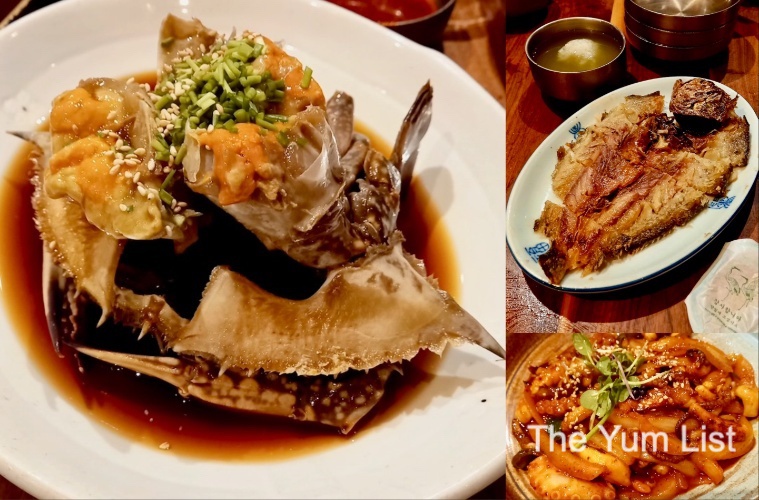
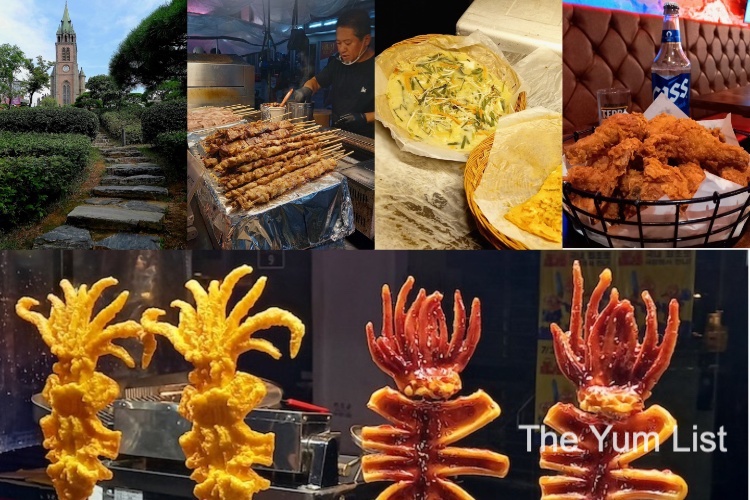
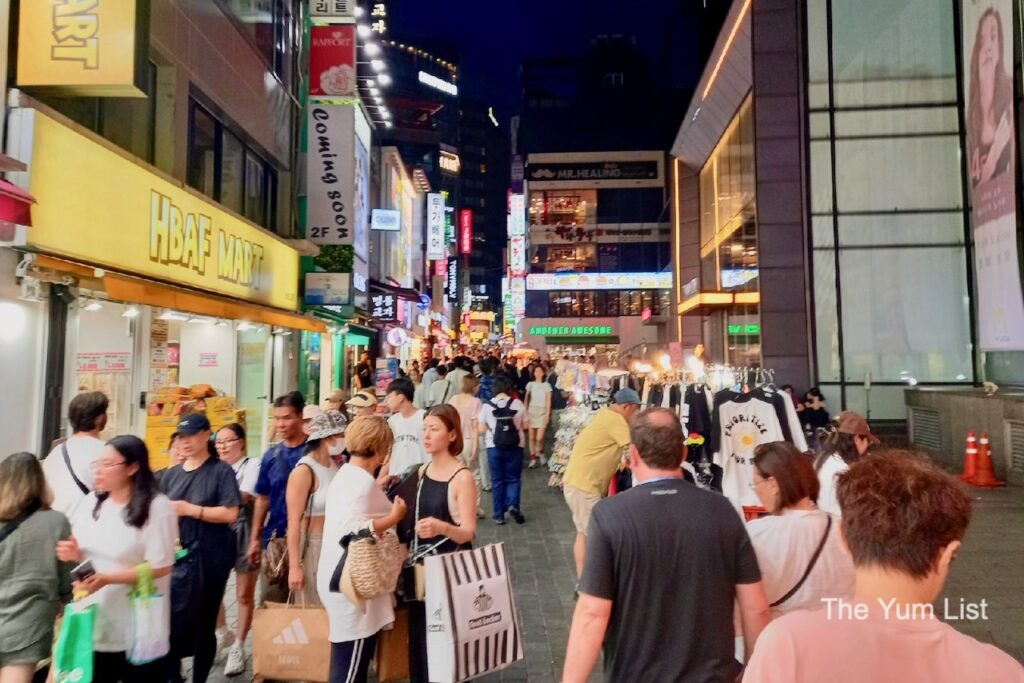
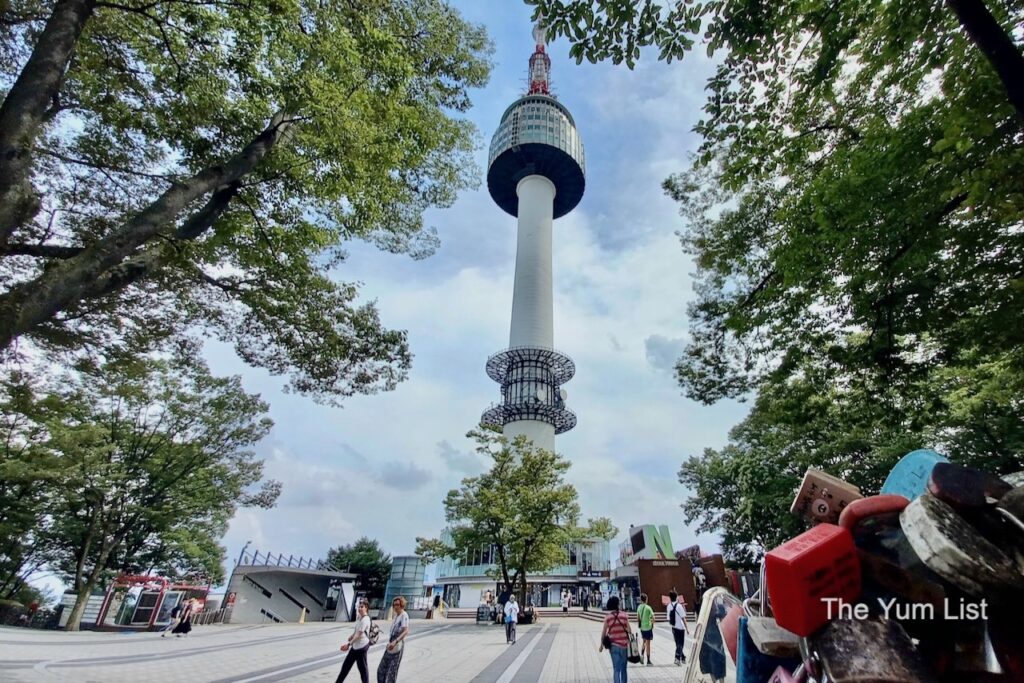
Day 3 – Day Trip from Seoul – The DMZ & Dongdaemun Market in the Evening
One of the highlights of our trip to South Korea was a day trip to the Demilitarized Zone (DMZ). It’s a unique experience to learn about the history and tensions between North and South Korea. We visited observation points, tunnels, and gained insights into this significant geopolitical area. At one stop, we were so close to a village on the other side of the border that we could see some of the township with binoculars. Some say it’s an artificial construct by the North Korean government, a “show” for foreigners. We saw one person outside during our visit. It looked pretty much deserted, but was still a fascinating sneak peek across the border.
Another memorable moment was entering a tunnel the North had built to the South, which was fortunately intercepted and blocked off several years back. This is one of four infiltration tunnels discovered to date, and they suspect there could be others they have not yet found. They say this particular tunnel is wide enough to see 30,000 troops entering the South every hour!
Take note: Restrictions are tight, and you must register with your passport and go through a military checkpoint before entering the tunnel site. Additionally, the number of buses allowed through daily to visit the tunnel is limited, so be sure to triple-check with your tour provider if tickets are guaranteed.
Previously, you could also visit the Joint Security Area (JSA), the only place where North and South Korean soldiers face each other. However, a US soldier fled across the border to North Korea in July 2023, and the area has since been closed to tourists.
Most tours also include the option of stopping at a man-made lake and suspension bridge on the way. It’s a pretty part of the world, and I recommend including it.
Day trips to the DMZ generally depart Seoul’s city centre around 7:30 am, and return around 4 pm (if you include the suspension bridge in your itinerary). Pick-up is from various locations, but the return is Seoul Town Hall. If you still have energy after the trip there are a few palaces and historical sites in this area, or Dongdaemun market is only a couple of stops on public transport away.
Dongdaemun Market & Dongdaemun Design Plaza (DDP)
Dongdaemun Market is Seoul’s largest shopping complex, housing 26 malls and over 30,000 shops. It carries a vast selection of goods, from fashion to electronics, at wholesale and retail costs, drawing both locals and tourists. The market functions 24 hours daily, with the nighttime market acclaimed for its lively atmosphere and affordable prices.
Nearby Dongdaemun Design Plaza (DDP) is a prominent cultural and architectural structure designed by Zaha Hadid. It serves as a centre for design, fashion, and cultural events. The plaza contains exhibition spaces, a design museum, and various stores and cafes. It is renowned for its modern architecture and LED rose garden, which are particularly striking at night.

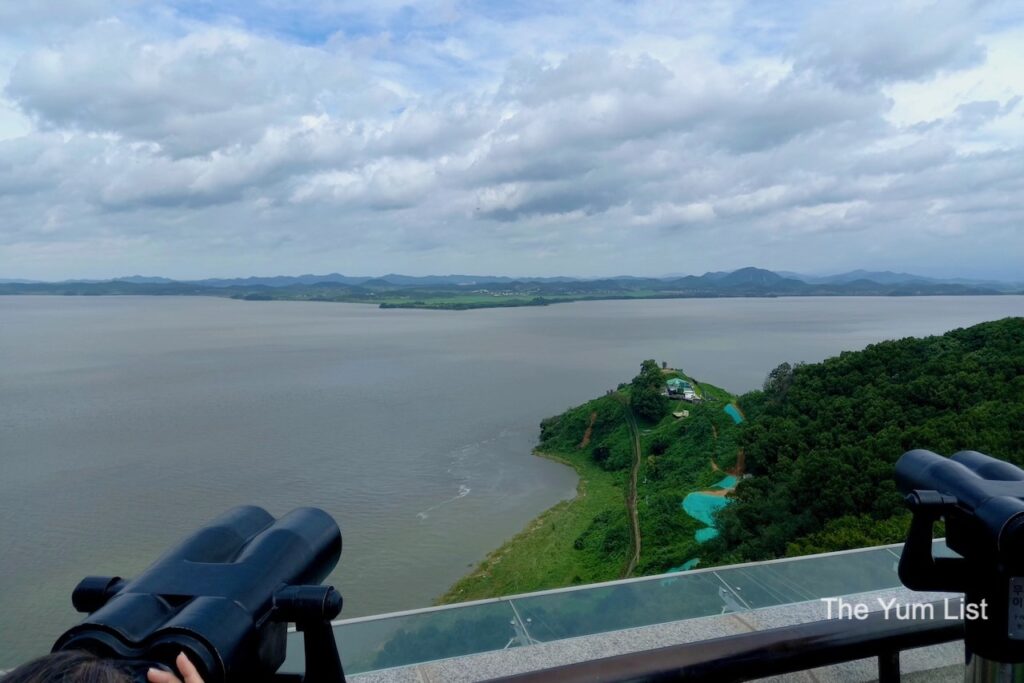
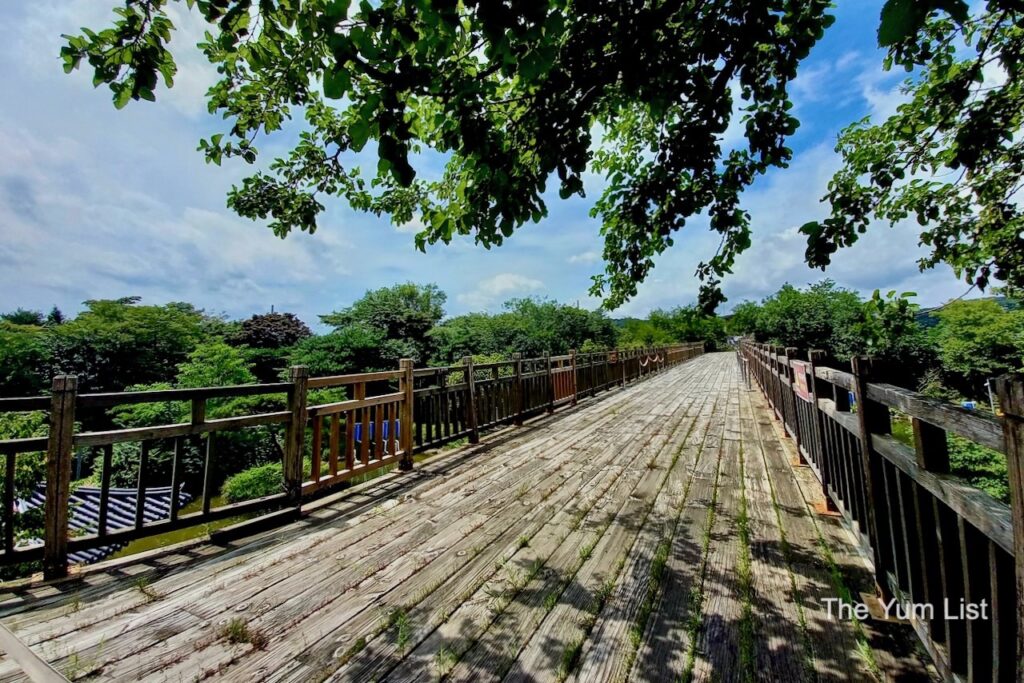

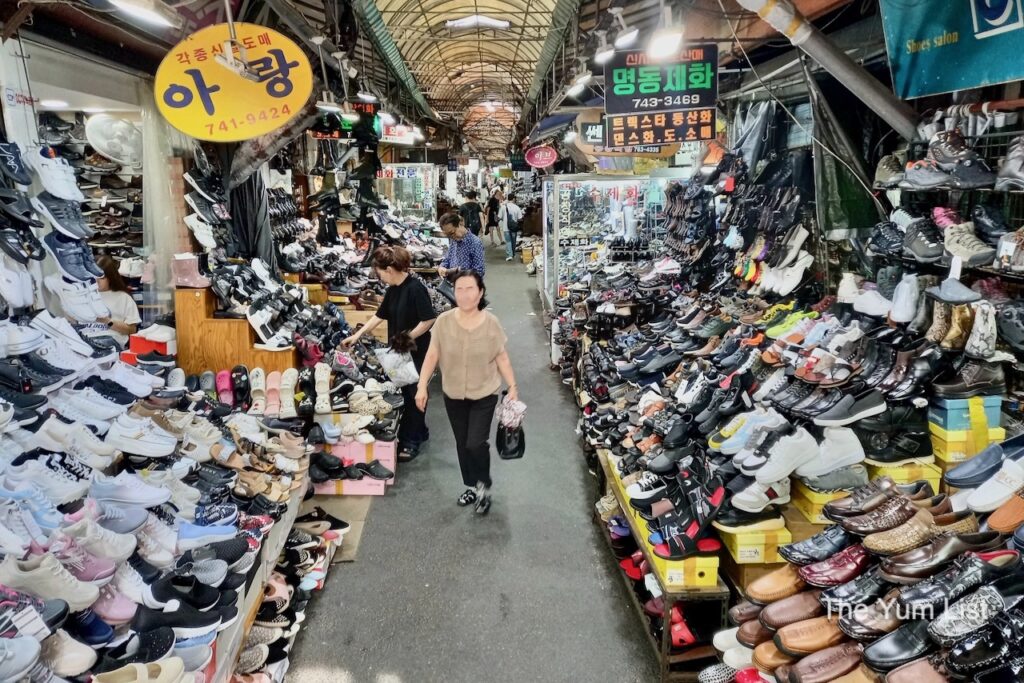
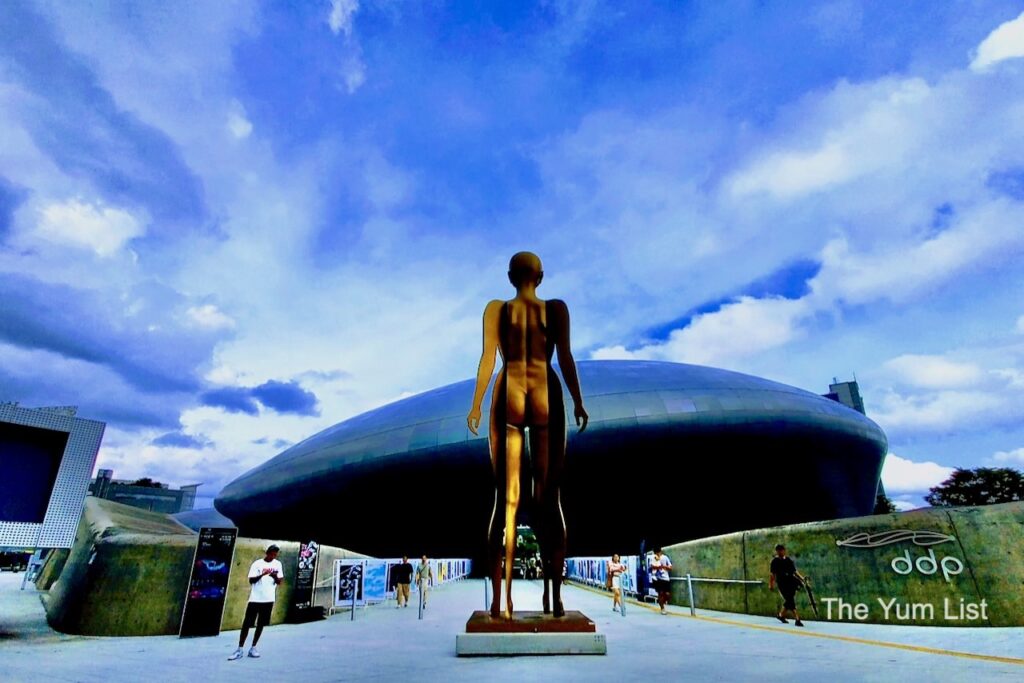
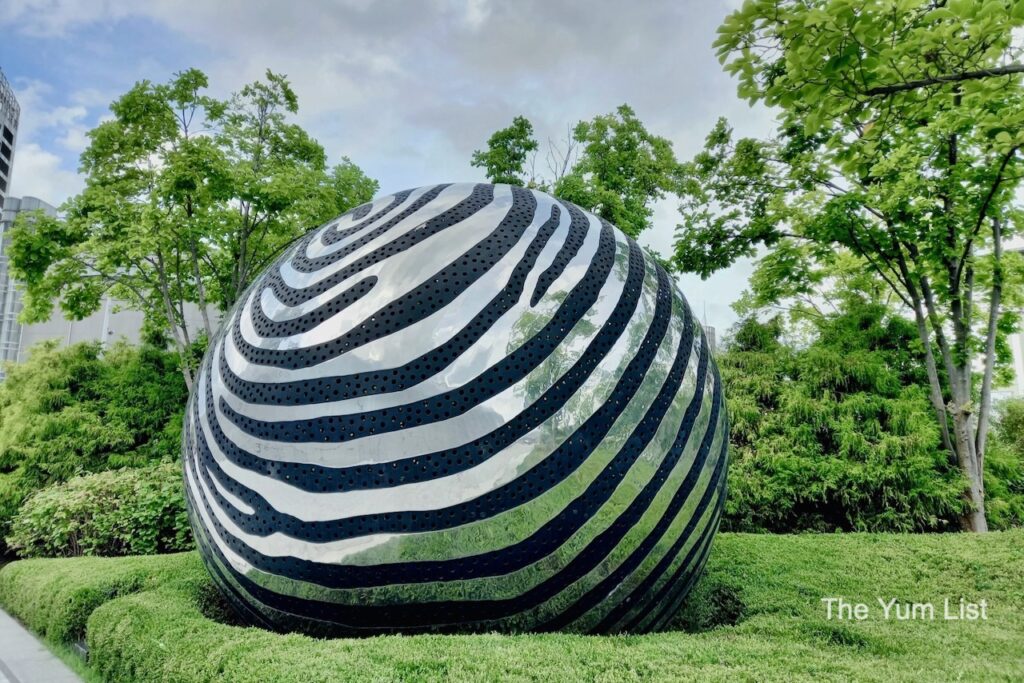
Day 4 – Sindang-dong (for BBQ) & Gangnam
On this trip, we spent a lot of time outdoors and on foot, so on our final day, we slept in a bit and then went for the best Korean lunch ever at Sindang-dong. Geumdwaeji Sikdang (Gold Pig) came highly recommended by foodie friends (both foreigners and locals). It’s been on the Michelin Guide’s Bib Gourmand list for several years running, so it can be tight to get a seat. However, I have some tips to get you in, in no time.
Geumdwaeji Sikdang, Sindang-dong
First of all, go in off-peak hours. We arrived at 2 pm, and the lunch crowd was already dispersing. You must register for a reservations app (you can scan the code at the door) and get an online waiting number. You could go wander the area and wait to be notified via email when your number is next, but I don’t recommend that. We stayed at the door. And, because the following numbers were not already there, we quickly moved from having 14 bookings in front of us to six to none. We waited 10 minutes!
Geumdwaeji Sikdang (Gold Pig) is famous for its Korean pork barbecue. We ordered the set for two people (KRW 78 000), which came with pork neck, pork cheek, bone pork belly, assorted grilled vegetables, the most delicious kimchi stew (seriously a highlight), noodles and rice. Of course, we added soju and local beer. It was the perfect meal.
Samseong-dong, Gangnam
In the afternoon, we crossed the river (on the subway) to Samseong-dong and Gangnam. The streets surrounding Samseong-dong station are filled with cafes, boutiques and crowds of the cool and hip café hopping and Insta-snapping.
Gangnam, made famous internationally with PSY’s catchy Gangnam style tune, is Seoul’s modern heart. Skyscrapers and luxury boutiques line its streets, and it’s home to the iconic Gangnam Style statue – giant golden hands posed in the famous dance move. There’s also the Starfield COEX Mall, a massive complex housing an aquarium, library, and a bazillion shops and dining outlets. K-pop fans can explore Hallyu K-Star Road, a street dedicated to Korean pop culture, with statues of famous K-pop stars. We only just scraped the surface here as we’d spent quite some time on foot on this trip and were exhausted. We ended up at The Timber House at the Park Hyatt Seoul in the early evening, enjoying live jazz music and craft cocktails – the perfect place to relax after a long day.
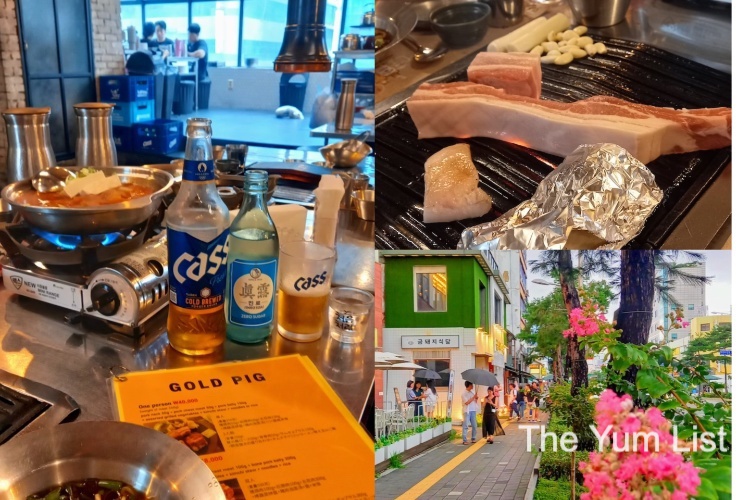


Seoul Travel Guide – 4-Day Itinerary, Highlights & Tips
This was our first trip to Seoul. I by no means claim to be a Seoul expert, but I hope this Seoul travel guide with our highlights and tips for a four-day itinerary will be useful for first-time visitors, too. Let us know below if there are other things you’d prioritise on an itinerary for four days in Seoul.
Find more travel tips for Korea here and stay updated with the latest gourmet and travel recommendations with The Yum List on Facebook here.

